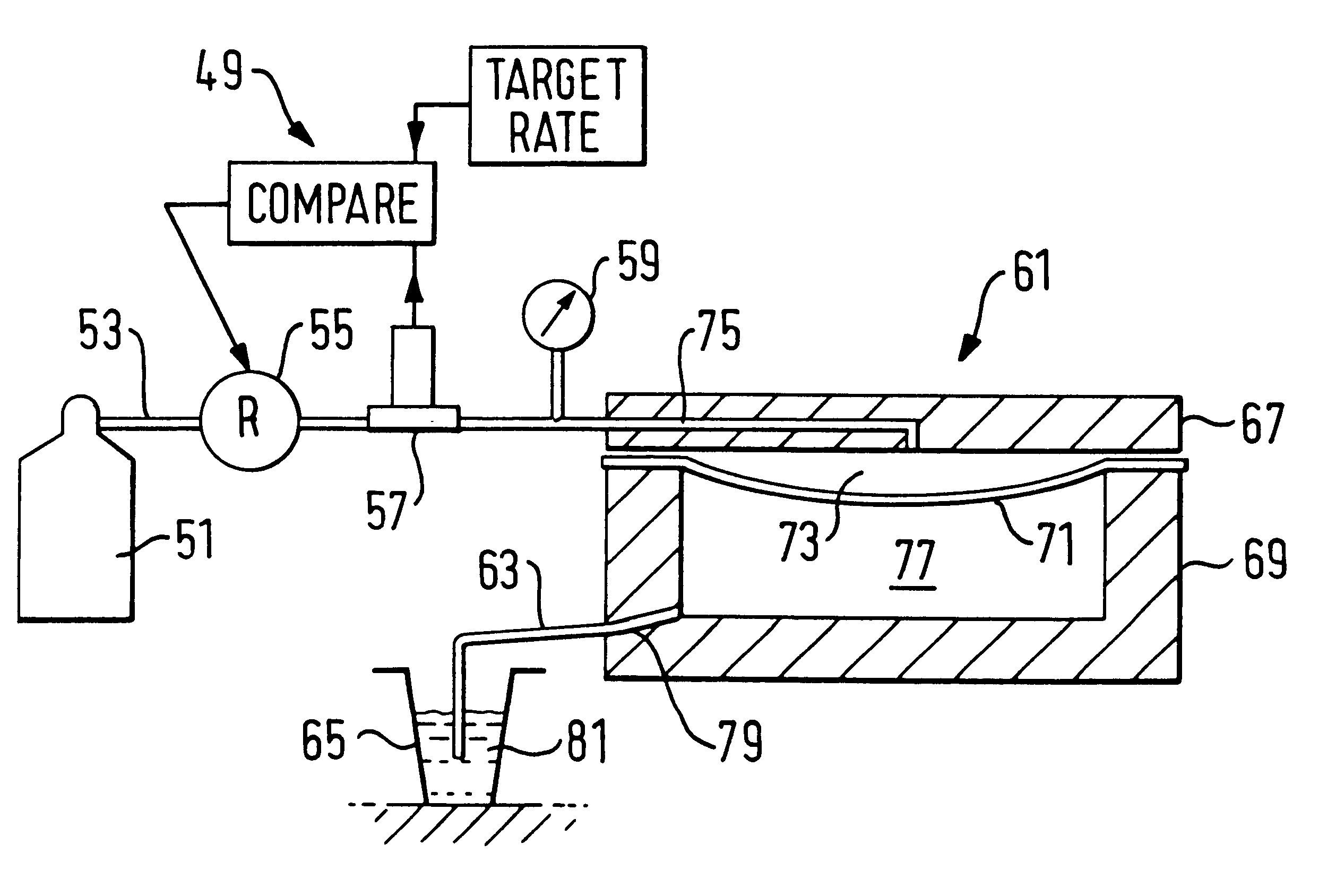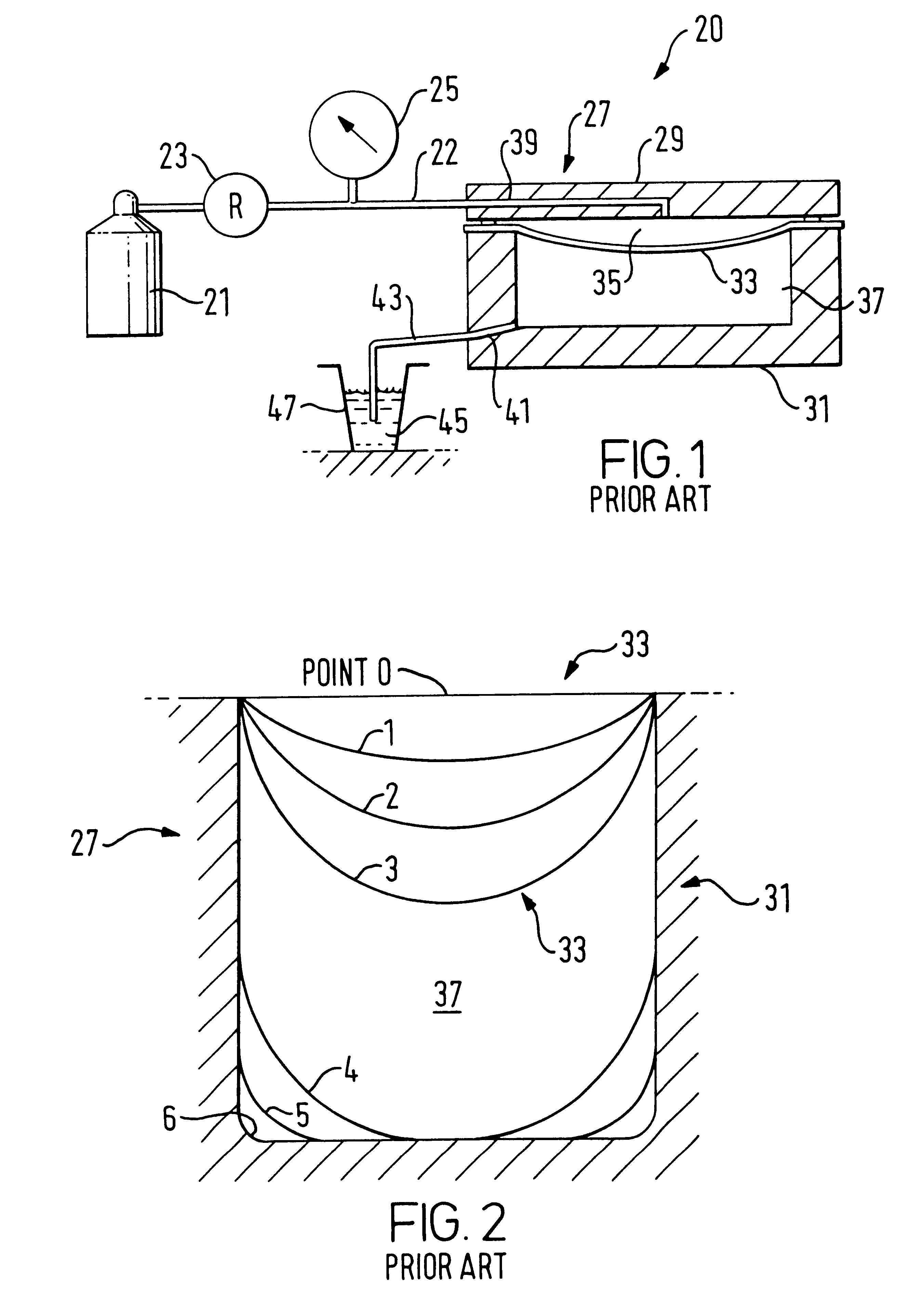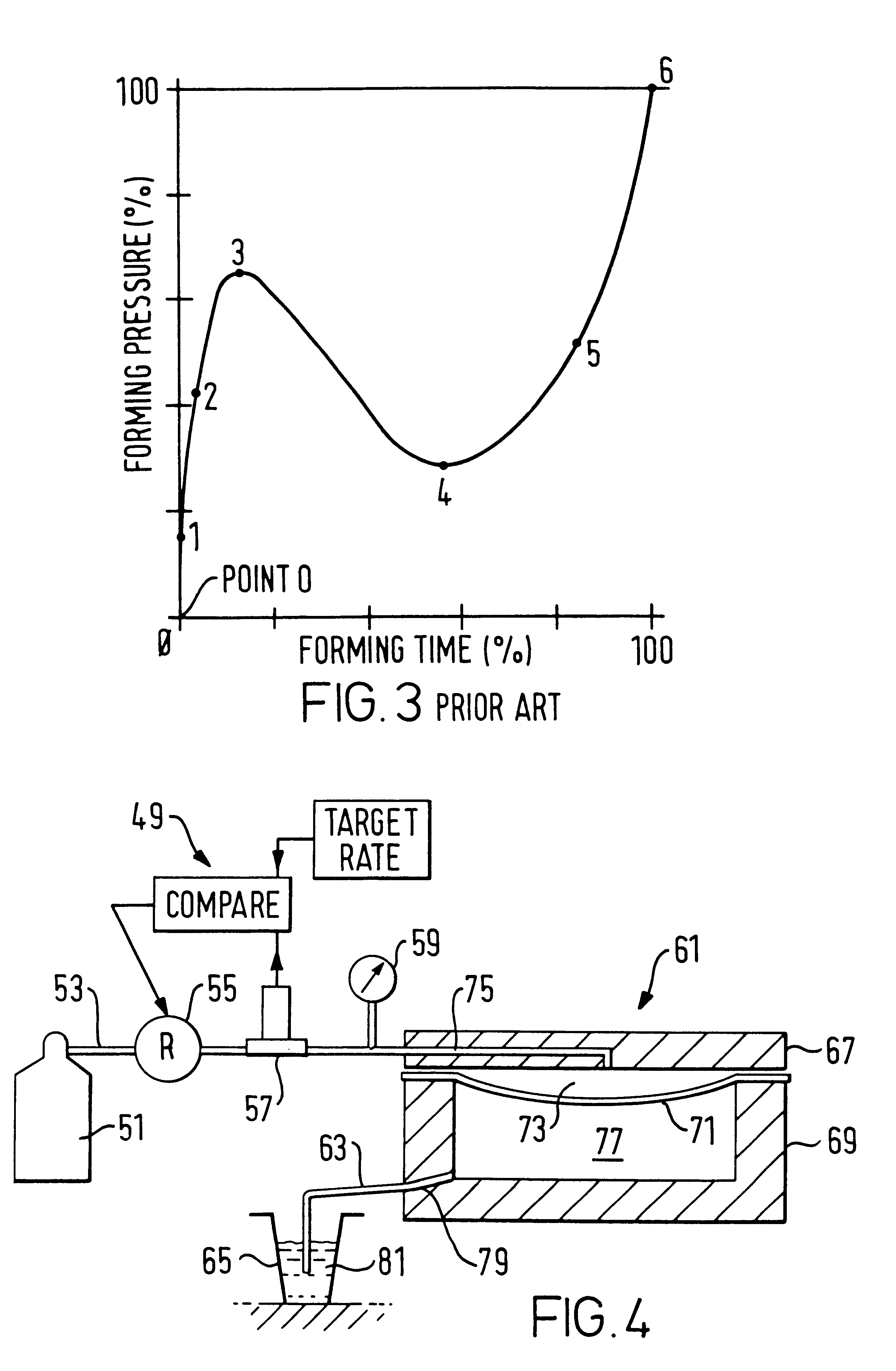Controlling superplastic forming with gas mass flow meter
- Summary
- Abstract
- Description
- Claims
- Application Information
AI Technical Summary
Benefits of technology
Problems solved by technology
Method used
Image
Examples
Embodiment Construction
FIG. 1 is a schematic of a simple prior art superplastic forming apparatus 20, which controls superplastic forming by regulating the forming pressure as a function of time. Apparatus 20 includes gas bottle 21, gas input line 22, pressure regulator 23, pressure gage 25, and forming die 27. Bottle 21 contains a pressurized inert gas, typically argon gas. This is known as the forming gas. Input line 22 fluidly communicates bottle 21, pressure regulator 23, pressure gage 25, and forming die 27. Forming die 27 is comprised of lid 29 and bottom section 31.
Metal sheet 33 is rigidly positioned in forming die 27 by having its periphery tightly compressed in between lid 29 and bottom section 31. Volume 35 is contained by sheet 33 and lid 29. Input port 39 is a passageway through lid 29 providing for fluid communication between input line 22 and volume 35. Bottle 21 thus fluidly communicates with volume 35.
Forming cavity 37 is a volume enclosed by bottom section 31 and sheet 33. Volume 35 and ...
PUM
| Property | Measurement | Unit |
|---|---|---|
| Pressure | aaaaa | aaaaa |
| Pressure | aaaaa | aaaaa |
| Pressure | aaaaa | aaaaa |
Abstract
Description
Claims
Application Information
 Login to View More
Login to View More - R&D
- Intellectual Property
- Life Sciences
- Materials
- Tech Scout
- Unparalleled Data Quality
- Higher Quality Content
- 60% Fewer Hallucinations
Browse by: Latest US Patents, China's latest patents, Technical Efficacy Thesaurus, Application Domain, Technology Topic, Popular Technical Reports.
© 2025 PatSnap. All rights reserved.Legal|Privacy policy|Modern Slavery Act Transparency Statement|Sitemap|About US| Contact US: help@patsnap.com



